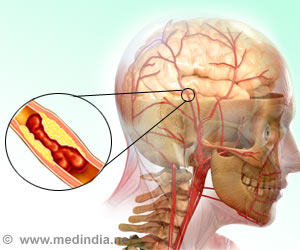Scientists have developed a microwave helmet that can be used for pre-hospital screening for bleeding in the brain in the event of a trauma
- Microwave helmets have been designed to detect internal bleeding in the brain to aid in faster treatment and care for the patient.
- The microwave helmets can be taken to the site of the incident, a major advantage over CT scans and their long waiting lists.
- The microwave helmet was initially developed to detect stroke.
New Health Care Application For Microwaves
Microwave measurements have been used previously for the identification of stroke; however, the current use of microwaves to detect internal bleeding is a new application. Traumatic accidents lead to disability and, in extreme cases, death of many individuals, with an estimated 10 million people affected every year. This necessitates the need to develop a method that can be used for quick assessment of the extent of damage within the brain.Microwave Measurement
The study involved microwave measurements of 20 patients who were hospitalized for surgery for chronic subdural hematoma. This is a severe health condition with intracranial bleeding. The results were correlated with the measurements from 20 healthy volunteers. The study also involved the use of traditional CT scans.The What is Computed Tomography? required the patient to be entered into the CT scanner before the extent of bleeding could be detected. However, in a microwave helmet, the patient could be assessed with lowered discomfort. When the results of the microwave measurements were compared with the results of the traditional CT scans, it suggested that there was great potential in the use of microwave helmets in detecting intracranial bleeding.
Dr. Johan Ljungqvist, who is a specialist neurosurgeon at the Sahlgrenska University Hospital said, that the results were very promising, though the study sample was small and was focused only in a particular type of head injury. He further stated that the microwave helmet could be used to assess the extent of damage to the brain, even before the patient reaches the hospital. It could be used in ambulances and other ancillary facilities as it is relatively less bulky.
The scientists state that they would be conducting further research studies, not only in Sweden, but in other countries. Dr. Mikael Persson who is the professor of biomedical engineering at Chalmers University of Technology said that microwave technology could revolutionize medical diagnostics and allow a faster and more cost effective method of detection. This method of measurement could soon complement CT scans and other imaging systems across the world. CT scans usually have long waiting hours as the patient needs to be prepared for the detection system.
Detecting Bleeding Using Microwave Helmets
The procedure to detect bleeding inside the brain requires the microwave helmet to be placed onto the head of the patient. When the microwave radiation is passed through the helmet, the head and the brain tissue will be examined. There are three parts to this microwave helmet- a helmet-like antenna system placed on the patient’s head
- a microwave unit
- a computer which is used to control the equipment, acquire data and process the signal
Microwave Helmets for Stroke
The microwave helmets were initially used to detect stroke among patients, in a study conducted by Stefan Candefjord and colleagues, titled “Pre-hospital diagnosis for stroke and trauma patients using microwave technology” and published in the journal Scandinavian Journal of Trauma, Resuscitation and Emergency Medicine.The study was designed to reduce the time from the onset of stroke till the time treatment was received. Thrombolytic treatment is effective for people with stroke; however only 1 to 8% of the patients receive this treatment due to late diagnosis. The use of this microwave helmet will aid in detecting stroke victims for whom anti-clotting drugs may be provided immediately, to reduce damage to the brain. Sometimes, during stroke, the blood vessel may burst and when anti-clotting drugs are not used, it can lead to catastrophic damage. The microwave helmet may be used for quick, pre-hospital screening which will aid in initiation of treatment, lowering damage caused to the brain.
References:
- Microwave Helmet Could Diagnose Strokes As Patients Ride To Hospital - (http://www.npr.org/sections/health-shots/2014/06/16/321628040/microwave-helmet-could-diagnose-strokes-as-patients-ride-to-hospital)
- Pre-hospital diagnosis for stroke and trauma patients using microwave technology - (https://www.ncbi.nlm.nih.gov/pmc/articles/PMC4577722/)
Source-Medindia















